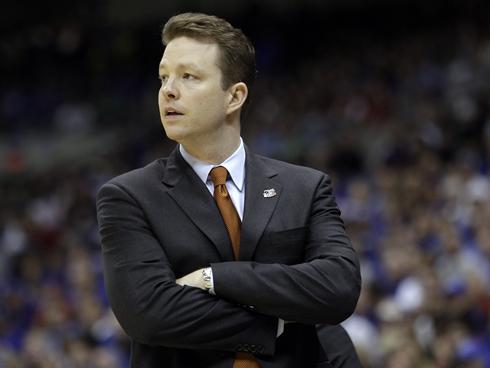Matchup Zone Continues to Key Richmond’s Run Through A-10
Posted by Lathan Wells on January 25th, 2014On paper, Richmond, now 4-1 in the Atlantic 10 after a win over St. Joseph’s Saturday, should not be competing with the better teams in the league. The Spiders are a team that is regularly outsized and do not have the same caliber of athletes as many of their opponents, but the reason the Spiders are playing so well is because of their intensity on the defensive end. Chris Mooney’s team boasts one of the best match-up zones in the entire landscape of college basketball, which allows the Spiders to compensate for their athletic and other deficiencies.

Chris Mooney presides over one of the best zone defenses in college basketball at Richmond (credit: usatoday.net)
After outclassing nationally-ranked UMass earlier this week, Richmond could have been in for a letdown of sorts on Saturday. Instead, the team came out with an extremely impressive effort defensively. As a team that starts two guards, two wings and just one post player, Richmond is already disadvantaged on the glass before the game even starts. The Spiders aren’t going to match most opponents’ rebounding efforts or their second-chance points, but Mooney expects and seems comfortable with that. Richmond lost the rebounding battle by 10, but still won the game by a 77-62 margin.
The reason for conceding a deficit on the boards is because of what Richmond can do in forcing teams into difficult offensive decisions. For example, a big man may receive the ball in the post to find 5’9” Kendall Anthony guarding him. Instead of a quick and easy two points, an immediate double-team comes from the weak side to force a kickout pass. The zone then resets very quickly, so there aren’t often many wide open looks on the opposite side (a major reason why, despite playing so much zone, Richmond was second in the A-10 in three-point field goal defense at 40 percent coming into Saturday). Perimeter players have trouble driving to the basket, and the amount of time it takes a team to find a decent look bleeds most of the shot clock. Richmond is only allowing 64 points per game (second in the A-10), and can live with the occasional offensive rebound from the other team because it’s so rare that the opponent can come in and dictate exactly what it wants to do.










































